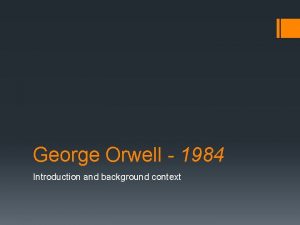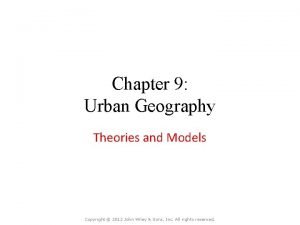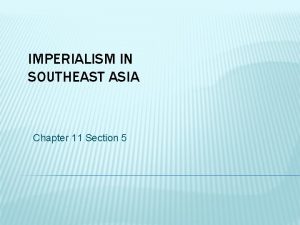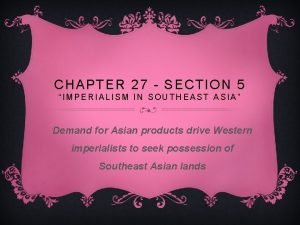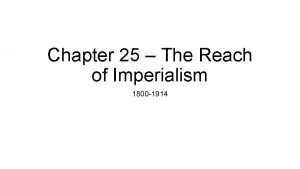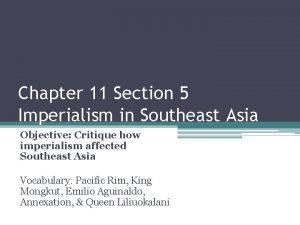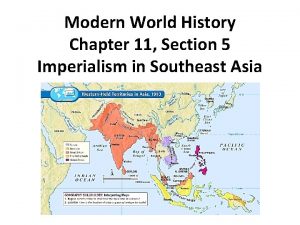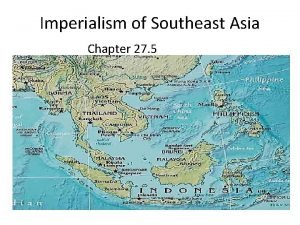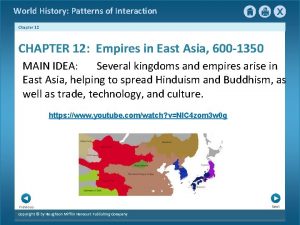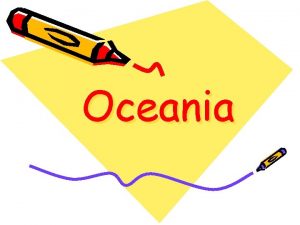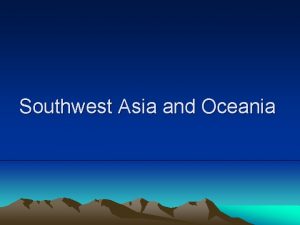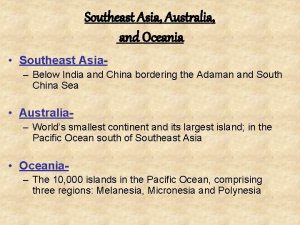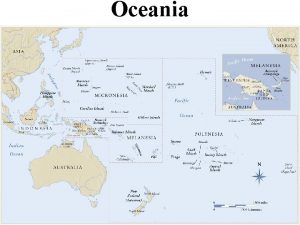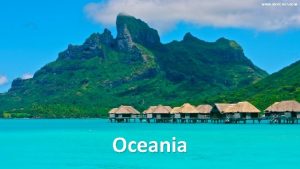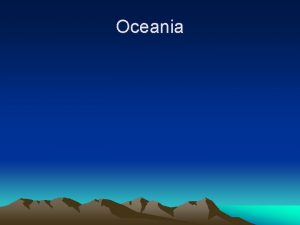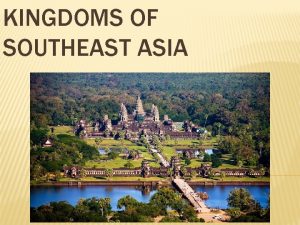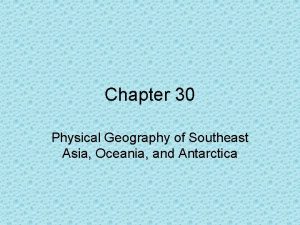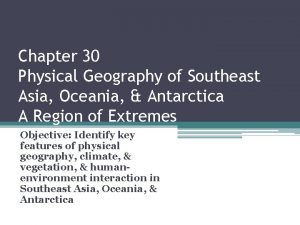Chapter 31 Human Geography of Southeast Asia Oceania














- Slides: 14

Chapter 31 Human Geography of Southeast Asia, Oceania, & Antarctica Migration & Conquest Objective: Analyze features of human geography in Southeast Asia, Oceania, & Antarctica

Chapter 31 Section 1 Southeast Asia Vocabulary: Mandala, Khmer Empire, Indochina, Vietnam War, & ASEAN Objective: Examine Southeast Asia’s history of diversity

Long History of Diversity • China & India influenced ancient Southeast Asia • Chinese art, technology, political ideas, & ethical beliefs • Hinduism & Buddhism spread from India & influenced religion & art in much of Southeast Asia • Mandalas – states organized as rings of power around a central court • Khmer Empire ruled from Cambodia in Southeast Asia from 9 th to 15 th century

Colonialism & Its Aftermath • By the 20 th century, most of Southeast Asia was colonized by the Europeans • The Europeans forced colonies to produce commodities like rubber, sugar, rice, tea, & coffee • Japanese had control of the region during WWII • After the war, they sough independence • Indochina (Cambodia, Laos, & Vietnam) controlled by the French struggled for independence • Vietnam War: 1957 -1975 US tried to prevent communism in South Vietnam, the US eventually withdrew their troops

An Uneven Economy • People of Southeast Asia depend mostly on agriculture for income • Rice is a profitable commodity • ASEAN (Association of Southeast Asian Nations) an alliance that promotes economic growth & peace in the region • Other importance industries include textiles, clothing, & electronic products

A Rich Mosaic of Culture • Southeast Asia has a religious diversity with Buddhism, Catholic, Muslim, & Hinduism • Buddhism & Hinduism influence art & architecture especially in Angkor Wat (Cambodia) • Most Southeast Asians live in rural villages & follow traditional lifestyles • However, more are moving into cities & leading more modern lives

Chapter 31 Section 2 Oceania Vocabulary: Micronesia, Melanesia, Polynesia, Subsistence Activities, Copra, & Taro Objective: Explain the Oceania region

A History of the Islands • For thousands of years, their descendants continued to migrate • Oceania is divided into three regions (Micronesia, Melanesia, & Polynesia) • European settlers set up plantations to grow coconuts, coffee, pineapples, & sugar • Some islands were destroyed during WWII & with nuclear testing

�A Traditional Economy • Subsistence Activities: family produces only the food, clothing, & shelter they need for themselves • Major crops for agriculture include banana, sugar, cocoa, & coffee • Fishing is also a major source of income • Tourism has become very important to the economy of Oceania

Culture of the Islands • 1100 languages are spoken in Oceania • Christianity is the most widely spread religion however some practice their traditional religion • Two distinct ways of life exist on the islands (traditional & modern)

Chapter 31 Section 3 Australia, New Zealand, & Antarctica Vocabulary: Penal Colony, Aboriginal People, Maori, Treaty of Waitangi, & Pakeha Objective: Explain how Australia & New Zealand became European outposts

History: Distant European Outposts • Great Britain established Sydney as a penal colony (place to send prisoners) • Aboriginal People migrated to Australia from Asia at least 40, 000 years ago • New Zealand was first settled by the Maori • Treaty of Waitangi gave Britain control over New Zealand • When gold was discovered, thousands of British went to Australia & New Zealand, most stayed there

Modern Nations • Australia & New Zealand remains apart of the British Commonwealth • New Zealanders have a long tradition of concern for equal rights & the welfare of its citizens • Australia & New Zealand prospered by exporting food products & wool to the United Kingdom • They have also developed industry & other manufacturing services • Antarctica is preserved for research

Distinctive Cultures & Modern Life • Most Australians are British descent but that proportion is changing because of high rates of immigration • New Zealand’s culture is a blend of British & Maori ways • 85% of people live in cities & towns in Australia & New Zealand • They are also well known for their recreational outdoor sports (swimming, tennis, rugby, cricket, & soccer)
 Lesson 1 physical geography of southeast asia
Lesson 1 physical geography of southeast asia 1984 map orwell
1984 map orwell Colonial encounters in asia africa and oceania
Colonial encounters in asia africa and oceania Chapter 22 human geography of southwest asia
Chapter 22 human geography of southwest asia Chapter 25 human geography of south asia
Chapter 25 human geography of south asia Southeast asian city model definition ap human geography
Southeast asian city model definition ap human geography Imperialism in southeast asia chapter 27 section 5
Imperialism in southeast asia chapter 27 section 5 Imperialism in southeast asia chapter 27 section 5
Imperialism in southeast asia chapter 27 section 5 Chapter 25 lesson 4 imperialism in latin america
Chapter 25 lesson 4 imperialism in latin america Chapter 11 section 5 imperialism in southeast asia
Chapter 11 section 5 imperialism in southeast asia Chapter 11 section 5 imperialism in southeast asia
Chapter 11 section 5 imperialism in southeast asia Chapter 27 section 5 imperialism in southeast asia
Chapter 27 section 5 imperialism in southeast asia Chapter 12 section 5 kingdoms of southeast asia and korea
Chapter 12 section 5 kingdoms of southeast asia and korea African city model
African city model Landforms of the southwest
Landforms of the southwest

